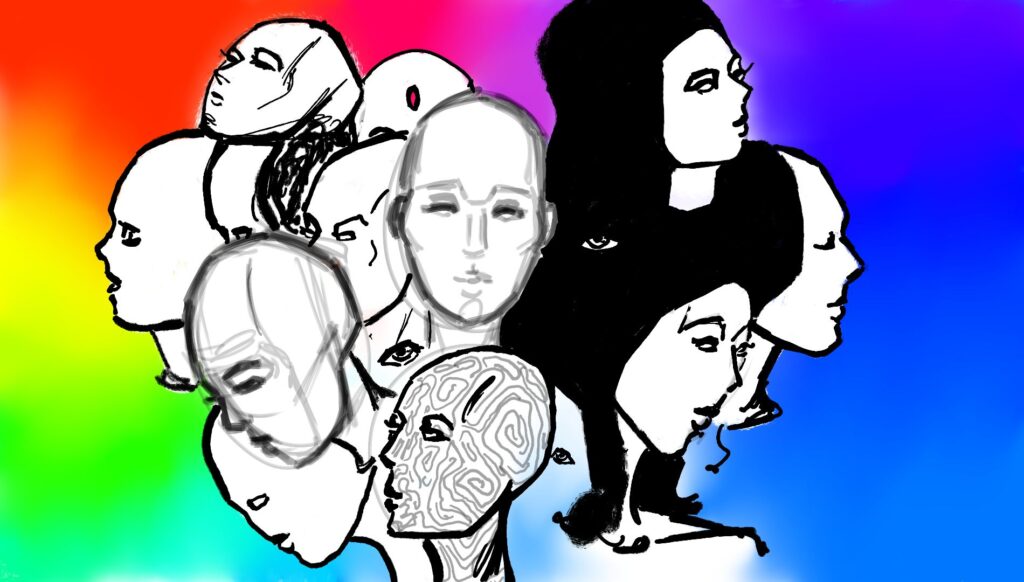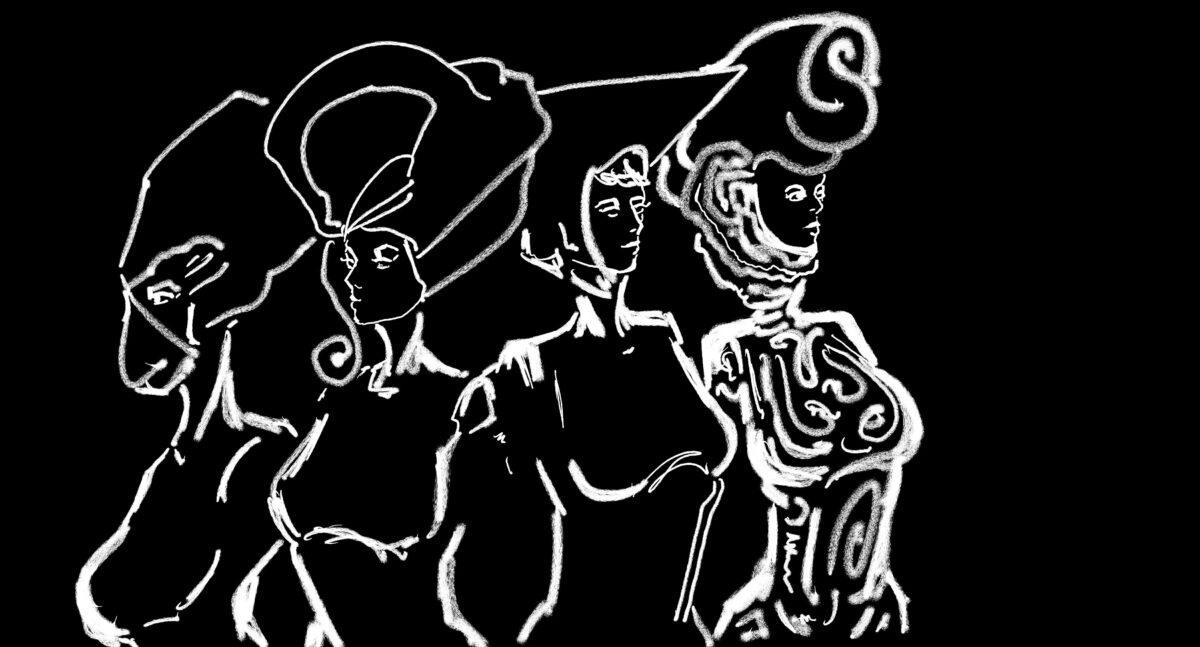- Characters are the foundation of your story.
- Creating them will be the most engaging task.
- So much so that an author may get trapped into the character creation’s process.
Summary – How to play Multiple Characters?
- Create 6 Characters
- Give them Roles & Functions
- Give them converging Goals & Alignments
- Give them a Place to Interact
- Let them Interact
- The Purpose of this article is to purvey a simple 5-Steps Process to help you play multiple Characters easily.
Diversity
- At least 6 Characters
- Start by Creating 6 Characters.
- Here are the 5 words you need for each of them.
- 1 Early Strength.
- A strength which will be displayed early
- 1 Early Weakness.
- A weakness which will be displayed early
- 1 Strength to Hone.
- A strength which will be developed through the Story.
- 1 Hidden Weakness
- A weakness which will be unfold through the Story.
- 1 Goal which is related to the Character’s Identity
- Through her Name.
- Through her Origins.
- Through her Quirks.
- Differences
- Characters need to be Different.
- These differences should be displayed clearly.
- The Easiest way to go is to create polar Opposites.
- And then gradually display the nuances.
- Where would the Characters agree.
- Why they would Cooperate
- How they would Cooperate.
- This is a Collective Story.
- The Characters can, & probably will, oppose each other.
- However, They are part of the Same Story.
- Goals & Alignments
- Characters will display Affinities.
- They will likely Oppose each other.
- As they interact, they will also develop an Interest for each other.
- The Characters Goals should be Converging.
- This doesn’t mean that all Character should have the Same Goal.
- Often, Characters will not have the Same Goal.
- But their Goals will be Converging as they Compete for the same Resources.
- There are 3 main types of Competition:
- For Territory & Influence
- For Information
- For Food & other essential resources
If you want to know more about displaying Diversity.
Main, Secondary & Tertiary Characters
- Main & Secondary characters Behaviors
- Main & Secondary characters Behaviors’ do not differ much.
- The main difference between a Main & a Secondary character is the time you allocate to each of them.
- Most of the time Main Character will have twice the number of Scenes than 2ndary Characters.
- 6 Types of Main & Secondary Characters.
- You can start any Story with these 6 Characters.
- And Reuse them by giving them different Quirks, Goals & Appearances.
- Depending on your Story’s lengths you can develop 6, 12, 18, 24 Characters if necessary.
- While at the same time preserving Diversity & Consistency.
- Here are the 6 types.
- The Enticer
- Eloquent One
- Amusing
- Confident
- Entertaining
- Offers Gifts & Services
- The Manager
- Manage the Team
- Understanding the needs
- Anticipates Reactions
- Manages Interaction
- Most Attentive member
- Help other develop their Individuality
- Deliver Personalized Solution
- The Strategist
- Focus on Optimization
- Plan Strategies
- Loves Solves Problems
- Favor Multi-Dimensional Issues
- Is Curious
- Loves to Share Knowledge
- Update own Education
- Enjoy learning
- The Reliable
- Resilient & Dependable
- High sense of Integrity
- Assertive
- Relentless
- Focused Aggressiveness to solve issues
- Willing to Understand own’s Anger
- Ensures the Party’s Protection
- The Advisor
- Try to be Dispassionate
- Temper own’s desires
- Look for Relevance
- Find the common interest/balance
- Develops Self-awareness in self & others
- The Exemplar
- High Dedication
- Support Initiatives
- Give Example
- Ask for Input
- Tap into everyone’s Strengths
- Ensure everyone Participates
| Role | Trait 1 | Trait 2 | Trait 3 | Name | Goal | Passion | Quirk | Individual Strength | Individual Weakness |
|---|---|---|---|---|---|---|---|---|---|
| Enticer | Entertaining | Confident | Generous | ||||||
| Manager | Empathetic | Individualist | Providing | ||||||
| Strategist | Competitive | Curious | Learning/Sharing | ||||||
| Reliable | Assertive | Relentless | Protective | ||||||
| Advisor | Pondering | Temperate | Self-Aware | ||||||
| Exemplar | Dedicated | Participative | Leading |
- Tertiary characters Behaviors
- Tertiary Characters will often have Support Functions.
- They will either Support the Antagonistic Party or the Protagonistic Party.
- Most Tertiary Characters follow this Pattern:
- Role
- Name, optional
- Goal
- Alignment
- Quirk
- Strength/Weakness
- Interests
- Role
- And will occupy the Following Roles:
- Administrator
- Merchant
- Driver
- Guard
- Citizen
- Healer
- Builder
- Hunter/Fisher/Farmer
| Role | Name | Goal | Alignment | Quirk | Strengths | Weaknesses | Interests |
|---|---|---|---|---|---|---|---|
| Administrator | |||||||
| Merchant/Trader | |||||||
| Driver/Commuter | |||||||
| Guard/Police/Military | |||||||
| Citizen | |||||||
| Healer | |||||||
| Builder/Crafter | |||||||
| Hunter/Fisher/Farmer |
If you want to know more about Character’s Roles.
Small Locations where they can interact
- Creating a Microcosm
- Create a Small Place.
- Small Places allow the Interaction to happen more easily.
- Use the Peculiarities of this Location to create Events.
- Create Dramatic Events.
- Call for Strong Reactions.
- Let the Characters react.
- Let them display their Individuality.
- Intimate Locations
- Small Locations are more Appropriate to Develop existing Relationships.
- They allows the Character to discover their Affinities.
- They may have the Same Objective & different Motivations.
- Intimate Locations include:
- Café/Restaurants/Snack-bars
- Inn/Hotels/Houses
- Park/Fractions of a Park
- Boutiques & Shops
- Other small Accommodations
- Larger Locations
- Large Locations are more Appropriate to Present new Characters & Create New Relationships.
- Cities & Countries are considered Large Locations.
- They allow the Characters to discover they have:
- Similar Occupations.
- Same Resources needed.
- Similar Issues.
- They may need to go through Different Resolution means.
- Often the main difference between playing a Scene in a Large or a Small Location is the Depth you want to create in a Relationship.
If you want to know more about immersive Locations.
Reactions & Interactions
- Cooperation & Collaboration
- Do the Characters need to Cooperate?
- If Characters need to Cooperate more conflicts may occur.
- How will they manage these Conflicts?
- Characters will do as they please.
- Which involves getting angry, nasty & arbitrarily so.
- They may disagree on the Objective.
- They may disagree on the Approach.
- They may realign latter if an Alternative is presented to them.
- If there should be Teamwork, the Characters will need to act together.
- If you are playing these Characters, let the Conflict be solved.
- It doesn’t mean that the Conflict has never happened.
- 1 of them may have to concede in this situation.
- And this concession may lead her to frustration.
- Display the Consequences later.
- Quirks
- Characters want to display their Individuality.
- Also, all the Characters you paly should act differently.
- Even if it is discrete.
- Let them display their Independence.
- Through peculiar habits.
- Unique Accessories.
- Through Interpersonal/communication skills.
- Give then an Accent.
- Give them a set of Specific Words & Phrases.
- Situations
- There are 3 main Types of Situations: Comfort, Conflict & Crisis.
- For each Character in each Situation ask:
- Comfortable Situations.
- Where are we?
- What makes this Location Comfortable?
- What makes it Pleasant?
- How do Characters behave?
- Conflictual Situations.
- Where are we?
- What makes this Location Uncomfortable?
- What makes it Unpleasant?
- How do Characters behave?
- And Crisis.
- Where are we?
- What is the Issue?
- Which Trials are the Characters facing?
- How do Characters React?
- Creating Simple Scenes
- The Easiest way to display Reaction is to Create Simple Scenes.
- You can Create most Scenes with 7 Simple Questions:
- Where are We?
- Why are we Here?
- What are the Stakes?
- Who is looking for What?
- Why can’t they Acquire it?
- What should they do to Acquire it?
- What’s the Outcome?
- What is Won?
- What is Lost?
- A Maze of Relationships
- Once you have all your Characters.
- Once you Know how you will Play them.
- And Once you have your Main Scenes.
- You can Create your Maze of Relationships.
- There are 3 Main Axis with Interlace:
- Relationships Main & Secondary
- Friends
- Allies
- Adversaries
- Foes
- Relationships Main & Tertiary
- Friends
- Allies
- Adversaries
- Foes
- Relationships Secondary & Tertiary
- Friends
- Allies
- Adversaries
- Foes
- Relationships Main & Secondary
If you want to know more about how to display Reactions.

